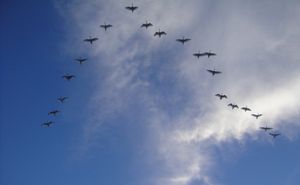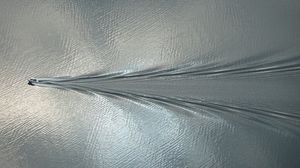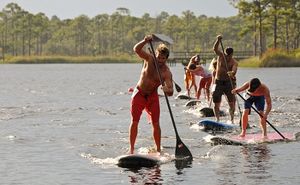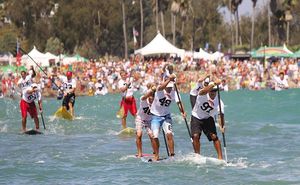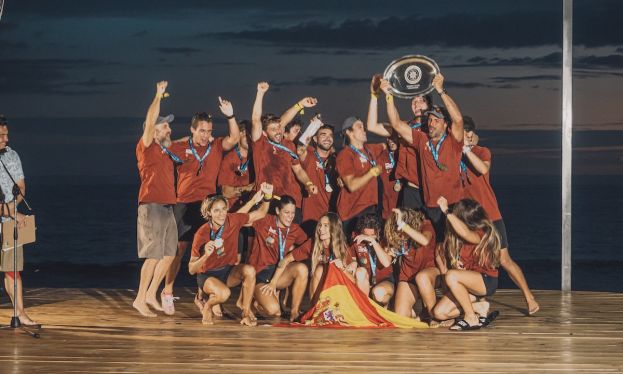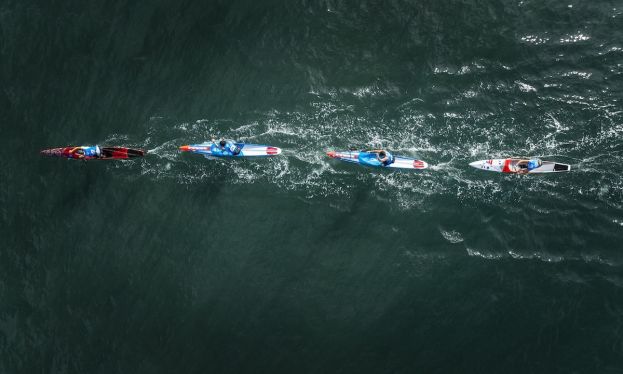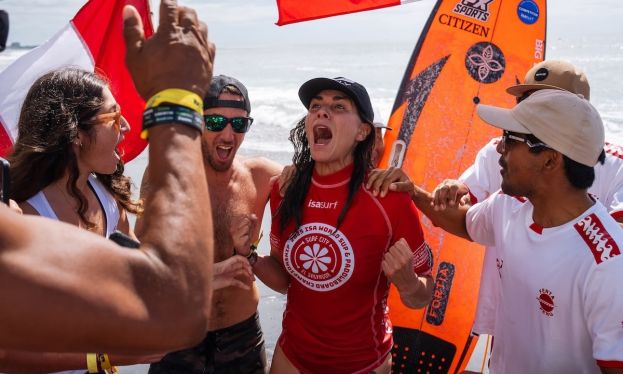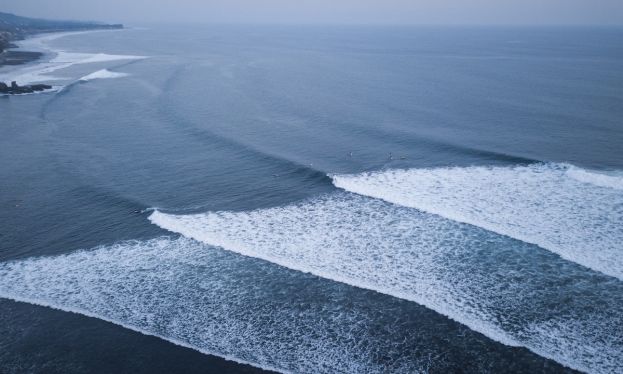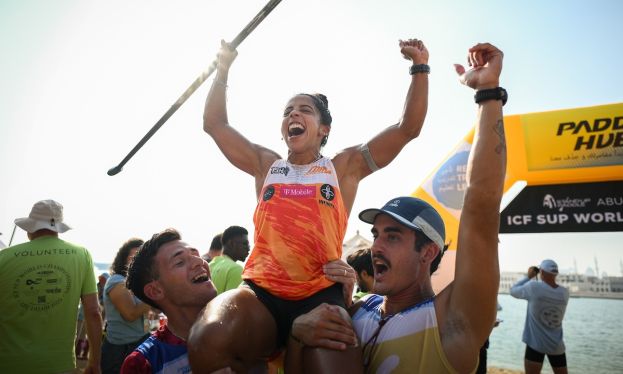Should Stand Up Paddle Drafting Be Allowed?
- Written by Morgan Becker
- Published in Tips
- Comments::DISQUS_COMMENTS
In the competitive field of stand up paddle racing, any small advantage over an opponent can mean the difference between victory and defeat; drafting could just be that advantage. Watch the video and read on for more.
Andre Neimeyer sits down with Jim Terrell at the Ta-Hoe Nalu race in Lake Tahoe on August 13th.
Check out more great videos and interviews with SUP athletes on SUP TV
|
|
SAN DIEGO, California - To draft or not to draft, that is the question. Unfortunately there is no easy answer when it comes to the competitive world of stand up paddle racing.
Without having to take a crash-course in physics and fluid dynamics one simply needs to look up in the sky to see a natural representation of drafting.
Pelicans and other birds will fly in a V formation because the wingtip vortices generated by the front bird create up-wash circulations. The birds flying behind will receive a “boost” by these circulations resulting in less-energy needed to keep them in flight.
So what do wingtip vortices and up-wash circulations have to do with stand up paddleboards? For an easy example we only need to visualize the wake created by an object moving through water. Just as the lead bird creates a wake in the air, a boat or paddleboard will also create a wake in the water.
The wake created by a stand up paddleboard, also known as a tail-wash, can be advantageous to those following closely behind and in the correct formation. The issue arises then when one racer hugs a wake, allowing the lead to consume more energy, and then breaks for the finish line with the power he or she has conserved.
Some races do not allow drafting. For example, the recent Molokai 2 Oahu Paddleboard Race explicitly forbid drafting, saying in their rule listing “No drafting after the first 15 minutes of the race. Drafting is defined as being in the wake of a craft or fellow paddler for more than 1 minute in any 5 minute span.”
So why do some races allow drafting while others do not? One answer may lie in the exciting aspect drafting brings to the sport. Jim Terrell, founder of Quickblade Paddles and four-time Olympic canoeist, knows a thing or two about drafting and shares his opinion with Andre Neimeyer in the video above.
Jim has applied his knowledge of sprint canoeing to stand up paddleboarding and says that, “If you don’t have an exciting format to watch, then the events will be less attended,” and adds that “the big issue with wash-riding is if you make it illegal, how do you enforce it?”
He admits that “on a stand up paddleboard, it is a huge advantage to ride the tail wash” but it isn’t an evenly distributed advantage, “it is more effective for a little guy obviously to ride a big guy than a big guy to ride a little guy.”
For now the debate will continue. Drafting will be allowed in some races and in others it will be restricted. Skilled racers will continue to take advantage of the wake created by their larger counterparts, and sprints to the finish line will be an exciting thing to watch.
What is your take? Should drafting be allowed in races?

Morgan Becker
After spending the first part of her life in Minnesota, Morgan traded in her snow boots for sandals and moved to sunny California. After graduating with a degree in Communication from The University of Southern California, she eventually made her way down south to San Diego and is taking advantage of the living by the best beaches and burritos California has to offer. If it’s sunny, you can find her at the beach relaxing, or exploring the calm water in the bay via paddleboards and kayaks.
Email This email address is being protected from spambots. You need JavaScript enabled to view it.
